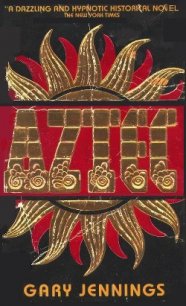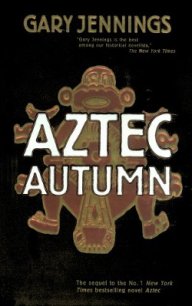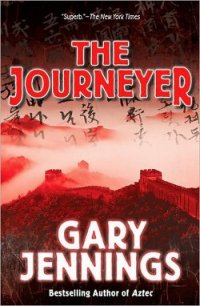Aztec Blood - Jennings Gary (книги онлайн бесплатно серия .txt) 📗
Prior to leaving the real mint inspector, we had obtained some information from him about the operation of the mint, roasting his feet over a fire for a time until the information flowed from his mouth.
The mint had several functions. Bars of silver mainly, but also some gold and copper were shipped from the mines to the mint. At the mint, the assayers were in charge of weighing and determining the purity of the precious metals, the treasurers collected the king's fifth from the value, and the engravers turned some of the bars into thousands of coins.
The mint was supposed to only coin silver reales and copper maravedies of several denominations, but it was well known that it occasionally did stamp gold. The maravedies had little value, a handful could barely buy a few tortillas. The silver reales ranged in size from a quarter reale to eight reales, popularly known as pieces of eight.
Like the other government positions, the director of the Casa de Moneta, the House of the Mint, was a position purchased from the king. While mint fees for assaying and stamping supplied income for the director, the income was supplemented by cheating.
The mint inspector had revealed what he was looking for after we toasted his feet over a campfire: gold residue to indicate the mint was illegally coining gold in defiance of the exclusive royal license granted to mints in Spain; evidence that coins were being tossed in a cloth pouch to grind off minute amounts of silver. The process was called "whirling" because indio workers would whirl the coins in the pouches for hours. The loss of silver from the process was too small to affect scales, yet when a tiny bit of silver was ground off of tens of thousands of coins by this method, the silver dust became significant.
More significant was the use of altered scales for weighing, and under the table deals in which the weights were understated. Less weight meant less of the king's 20-percent tax collected. Of course, the mint director and the owner of the silver split the thefts.
Mateo and I, as seasoned criminals, were better equipped to uncover nefarious acts than the bureaucratic mint inspector. Given the time, we would have uncovered each and every way the mint people were cheating, but our duty was not to find their criminal activities—we were there to plan our own.
Our interest was in security measures and the location of the treasure within.
The building was more secure than a castle. The walls were two feet thick. There were no windows on the ground level. The second-floor windows had iron bars. Both the lower and upper floor were wood. Only one exit door existed, and it was more than a foot thick and located in front of the building. No buildings bordered the mint on any side. Two guards slept in the building at night. Everyone who entered was searched upon exiting.
The silver and gold was stacked in bars on iron shelves and heavy iron tables. It sat there in the open, ready to be carried off, by anyone who could walk through walls.
There were only two ways to breach the security at night: batter down the door or blow a hole in the wall. Either method would bring a hundred of the viceroy's soldados running.
Mateo discovered a hidden bolthole where the cloth bags—used to hold batches of new-minted silver coins—were kept. In some of them he found traces of silver shavings and bullion dust. It was a minor matter, but Mateo acted as if he had uncovered many other violations. He gave the assistant director a severe tongue lashing, frequently referring to dungeons and hanging. The man was sickly green and sweating profusely by the time he and Mateo disappeared into his office. Mateo came out a moment later, and we "left for Lima."
"How much did you squeeze him for?" I asked, after we had crossed back over the causeway. We were heading southeast for Acapulco but would soon buy horses and reverse our direction.
He save me a sideways glance. "How do you know I got anything?"
"How do I know the sun will rise? You are a picaro. You had the poor man almost on his knees praying for forgiveness and the chance to see his family once again. Of course you intended to share it with your partner."
"A thousand pesos."
I gasped. "?Santa Maria!" In our state of poverty, it was a literal fortune. I did some quick calculations. That much money could last the two of us a year if we lived modestly and were careful. It would last no more than a week if Mateo was permitted to indulge in gambling and women.
"If we are prudent—"
"We will double it on the way back to our camp, compadre. There used to be a place in Texcoco. I'm sure it's still there. Three gambling tables and five of the most beautiful women in New Spain. There is a mulatta from Hispaniola that..."
I groaned and put my hands over my ears.
I underestimated Mateo's ability to lose money. We left the Texcoco gambling cantina three days later with our pockets empty and fresh blood on Mateo's sword. He had caught the owner's son cheating him at cards. The son would never shuffle another deck of cards again because it takes two hands. We fought our way out of the town with the owner, the constable, and two dozen of their friends trying to stop us.
Leaving town as quickly as our horses could carry us, I spotted the acting troupe that we had detained briefly along the Jalapa road before releasing them. They had set up the traditional playhouse called a corral in an empty lot—an elevated stage a couple of feet off of the ground with its back to one of the buildings. The roofs, windows, and patios of the other buildings formed the area where the audience stood or sat on logs or benches.
This, of course, was exactly how we had put on comedias. And it gave me a flash of insight as to how we could relieve the mint of its treasure.
"Act II!" I yelled to Mateo as we road out of town.
"What?"
"Act II. I know Act II for the mint."
He twirled his hand near his head to advise me that I was loco.
ONE HUNDRED AND FIVE
I was happy to be back in the business of being the autor of comedias, even if they were bandit extravaganzas.
To implement our plan to rob the mint, we would need our three bandito amigos. They were stupid, greedy mestizos, but their strong backs would be necessary. That meant we had to do something about the two prisoners. The obvious solution would be to kill them, but Mateo had more sympathy for the espanols than the rest of us. At his insistence, we chained them together in a small cave and hired nearby indios to feed them twice a day. The indios were told to wait ten days, and then release the two men. Recalling that indios sometimes had trouble with numbers—their coins often had slash marks on them to indicate denomination so the indios would understand their value—I gave them ten pebbles to ensure that they understood that the prisoners were not to be released for ten days.
While we were arranging confinement for the prisoners, we put indias to work sewing scenery for the play. The easiest play to get permission to put on would be one with a familiar religious theme. We chose a play similar to an auto sacramentale, a play with a sacred theme, the type usually performed as part of the Corpus Christi Feast Day celebration. Only our version involved Mateo having the only speaking part, that of a narrator who describes the action as God wreaks vengeance on sinners by casting down a great deal of heavenly thunder and lightning.
The chance that anyone would pay for an admission for the play after the first performance was negligible, but we only needed one performance. And with a religious theme, there would be no problem getting the comedia licensed by the viceroy and the Holy Office.




